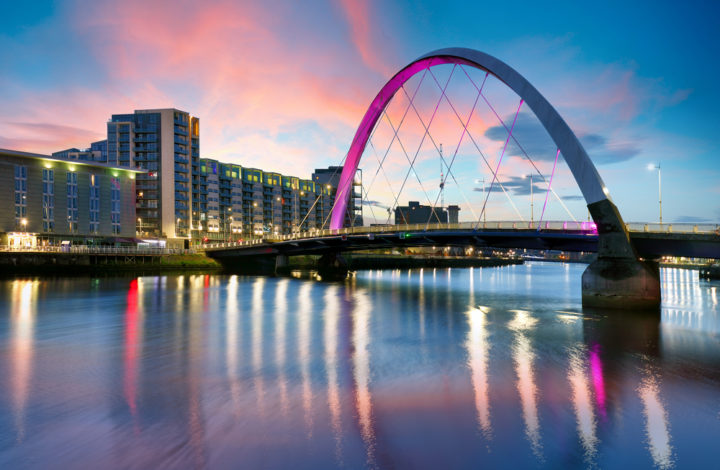Net Zero Strategy: one plan to rule them all?
Three weeks until COP26 the government is rumoured to be signing off their overarching Net Zero Strategy.

By Jess Ralston
@jessralston2Share
Last updated:
Three weeks out from taking the spotlight on the biggest climate stage we’ll see in a lifetime - COP26 – the government is rumoured to be signing off their overarching Net Zero Strategy.
Hailed as THE plan for how we reach our ambitious goal for 2050, there is still much to be decided in the document despite an influx of sectoral strategies released in the last year.
So, what can we expect?

Content is crucial
No one can accuse civil servants of sitting idle this year. Since November 2020, at least five climate-related documents have been published. The PM’s Ten-Point Plan; the Hydrogen Strategy; the Transport Decarbonisation Strategy; the Industrial Decarbonisation Strategy and the interim Net Zero Review are among them. Encouragingly, the golden thread of reaching the level of the sixth Carbon Budget - 68% emissions reductions by 2035 (as well as net zero in 2050) - has been woven into them all.
However, some strategies were criticised for a lack of ambition. For example, the industrial plan provided hardly any new commitments or policy, and some have not even been released yet, despite being due years ago. Looking at you Heat and Buildings Strategy.
So, if the Net Zero Strategy is simply a top-level summary of each of these sectoral strategies – as some think it might be – is that enough for a wannabe world leader on climate? It certainly won’t provide the punch that some Ministers hope it will; many have repeatedly referred to the Net Zero Strategy when fending off a grilling about government commitment (and cash) for climate.
This is compounded by delays to the final Net Zero Review. Led by Treasury and looking at who will pay, the distributional impacts of doing so and likely highlighting that the economic benefits will outweigh the investment, this document will likely hold one of the vital keys to unlocking net zero. Optimists might hope this review will be released before COP26 too, and all the pieces of the puzzle can be put together, with public investment likely an important focus post-pandemic.
Big shoes to fill
The Strategy certainly has big shoes to fill. The gaps are apparent and often pointed out by government critics and cheerleaders alike. For example, the PM recently committed to all of the UK’s electricity coming from green sources by 2035. But how this will come about is not yet clear – reducing energy demand, storage and flexibility will be huge parts of the transition but are seldom talked about.
Similarly, the incentives that will be brought in to encourage a switch to electric vehicles and low carbon heating are yet to be seen. These glaring gaps are among some of the tough questions that need answers for the UK to be considered credible on climate.
Climate action = levelling up
A key theme of the Conservative party conference this year was ‘levelling-up’. The Prime Minister referred to it numerous times, a new department led by cabinet veteran Michael Gove has been set up to address it, and at least £4bn has been committed to the agenda so far.

The Net Zero Strategy provides the best chance yet to highlight how going green equals levelling up. It would do well to touch on specific areas like Blackpool – a town that has some of the highest rates of fuel poverty, lowest energy efficiency in homes and peak unemployment rates - that would benefit from a green homes revolution where issues could be simultaneously tackled.
New ‘Red Wall’ MPs are certainly keen to link up economic growth with tackling climate change. Ben Houchen of Teesside, for example, has focussed on creating a zero carbon hub in the North East town and has explicitly stated that ‘investing in the clean industries of the future is not just important in achieving net-zero, it’s also crucial for jobs’.
Targets set, but no plan yet
Ahead of the COP, countries across the world have published Nationally Determined Contributions (NDCs) – basically committing to a set level of emissions reductions by 2030 – with the UK boasting an ambitious 68% (or more) by this date, representing one of the highest levels of any country.
However, alongside submitting NDCs, countries are supposed to release plans, commonly referred to as Long Term Strategies (LTS), detailing how it will reach its targets. Although it is the host country, the UK has not yet released its LTS.
As hosts of COP and with ambitions to be a “world-leader” on climate, this has left some wondering just how seriously Britain’s governmental decision makers are thinking about pathways to reach its own NDC. And as many have pointed out: targets are easy to set - it’s deciphering the best way to get there which is the difficult but critical part.
A good net zero strategy (which will likely represent the UK’s LTS) will relieve the fears of those who doubt government plans will fail to materialise and, crucially, bolster investment in green sectors that will likely be vital to getting there.
All in all, the UK has made a decent start to the year it hosts the world at COP26. All the ambitious talk, however, will need to be backed by a plan that walks the walk. The Net Zero Strategy is the grandest opportunity on the grandest stage – COP26 – that those in Whitehall will have to make this splash. Failing to do so would be a missed opportunity to show the climate leadership they crave.